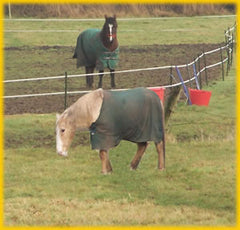You have no items in your shopping cart.
- Electric Netting
- Tape, Twine, Wire And Rope
- Fencing Energisers
- Fencing Posts
- Insulators
- Accessories
- Electric Fencing Kits
- Chicken Feeders and Drinkers
-
Information
- What is Electric Fencing
- Advantages of an Electric Fence
- Installing a Fence
- Is an Electric Fence a serious risk
- How to Erect a Net
- What you Need for a Fence
- Testing an Electric Fence
- Quantities Guide
- Improve Your Fence
- Poultry Netting Trial
- Electric Netting Dimensions
- Electric Fencing Mistakes
- TLD Max Technology
- Energiser Terminology
- Choosing an Energiser
- Fencing Articles
- Trouble Shooting
- Delivery Terms
- Frequently Asked Questions
- Here's a Blog Worth Reading
After the Dry Weather.
With the dry weather there have been incidences where horses have been more inclined to ignore the electric fence and seek an escape. Without having seen the situation first hand and as the issue had not cropped up before, it is reasonable to assume the grass looked greener on the other side. The poor blighter simply wanted better forage. An electric fence is NOT a physical barrier and as the desire of an animal to escape so the strength of the fence must increase – if a 500-kilo animal really WANTS to get somewhere it will take a concrete wall to stop him.
It is necessary to correct this. Firstly, and most obvious – correct the reason for  wanting to escape. Then establish that the electric fence is working as it should. The tape could easily have been damaged and as the little filaments in the tape run parallel to each other one break really does affect the rest of the fence. This is not so critical with rope where the filaments are continually being re-joined. A good fence should be reading in excess of 5000 volts. There is a procedure to follow that simplifies finding faults in a fence which will ensure that faults are dealt with.
wanting to escape. Then establish that the electric fence is working as it should. The tape could easily have been damaged and as the little filaments in the tape run parallel to each other one break really does affect the rest of the fence. This is not so critical with rope where the filaments are continually being re-joined. A good fence should be reading in excess of 5000 volts. There is a procedure to follow that simplifies finding faults in a fence which will ensure that faults are dealt with.
With an effective fence in place it may be necessary to acquaint the horse to the fence again. There are many theories on how best to achieve this, feeding under the fence, backing the horse into the fence so he deliberately gets a shock and others. I feel these are a bit drastic. If the reason for wanting to escape is taken care of then simply releasing them in the middle of the field and allowing them to examine the fence in their own time is adequate.
If this requires bolstering, a bait tied to the fence with some molasses, apple cordial or other sweet-smelling attractant will definitely be effective. The horse will examine it with his nose and may lick it. Both these organs are very highly enervated, very sensitive and a shock in those regions creates a very vivid impression and will re-enforce the fence.








← Older Post Newer Post →
0 comments